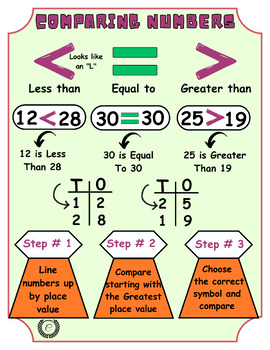Greater Than/Less Than Educational Poster
Perry Clemons
32 Followers
Grade Levels
1st - 6th
Subjects
Resource Type
Standards
CCSSK.CC.B.4
CCSSK.CC.C.6
CCSSK.CC.C.7
CCSS1.NBT.B.3
CCSSMP1
Formats Included
- Zip
Pages
2 pages
Perry Clemons
32 Followers
Description
Make comparing numbers a breeze with our captivating and beautifully illustrated "Greater Than and Less Than Explained" educational poster! This dynamic poster is designed to demystify the concepts of greater than and less than, empowering students with a solid grasp of numerical comparisons.
Equip your students with a solid foundation in number comparisons using our "Greater Than and Less Than Explained" educational poster. It's a must-have resource that simplifies complex concepts, making math learning an enjoyable and enlightening experience.
As with all of our resources, this comes with a print-ready pdf and an editable version to customize for your class.
Total Pages
2 pages
Answer Key
N/A
Teaching Duration
Lifelong tool
Last updated 10 months ago
Report this resource to TPT
Reported resources will be reviewed by our team. Report this resource to let us know if this resource violates TPT’s content guidelines.
Standards
to see state-specific standards (only available in the US).
CCSSK.CC.B.4
Understand the relationship between numbers and quantities; connect counting to cardinality.
CCSSK.CC.C.6
Identify whether the number of objects in one group is greater than, less than, or equal to the number of objects in another group, e.g., by using matching and counting strategies.
CCSSK.CC.C.7
Compare two numbers between 1 and 10 presented as written numerals.
CCSS1.NBT.B.3
Compare two two-digit numbers based on meanings of the tens and ones digits, recording the results of comparisons with the symbols >, =, and <.
CCSSMP1
Make sense of problems and persevere in solving them. Mathematically proficient students start by explaining to themselves the meaning of a problem and looking for entry points to its solution. They analyze givens, constraints, relationships, and goals. They make conjectures about the form and meaning of the solution and plan a solution pathway rather than simply jumping into a solution attempt. They consider analogous problems, and try special cases and simpler forms of the original problem in order to gain insight into its solution. They monitor and evaluate their progress and change course if necessary. Older students might, depending on the context of the problem, transform algebraic expressions or change the viewing window on their graphing calculator to get the information they need. Mathematically proficient students can explain correspondences between equations, verbal descriptions, tables, and graphs or draw diagrams of important features and relationships, graph data, and search for regularity or trends. Younger students might rely on using concrete objects or pictures to help conceptualize and solve a problem. Mathematically proficient students check their answers to problems using a different method, and they continually ask themselves, "Does this make sense?" They can understand the approaches of others to solving complex problems and identify correspondences between different approaches.


